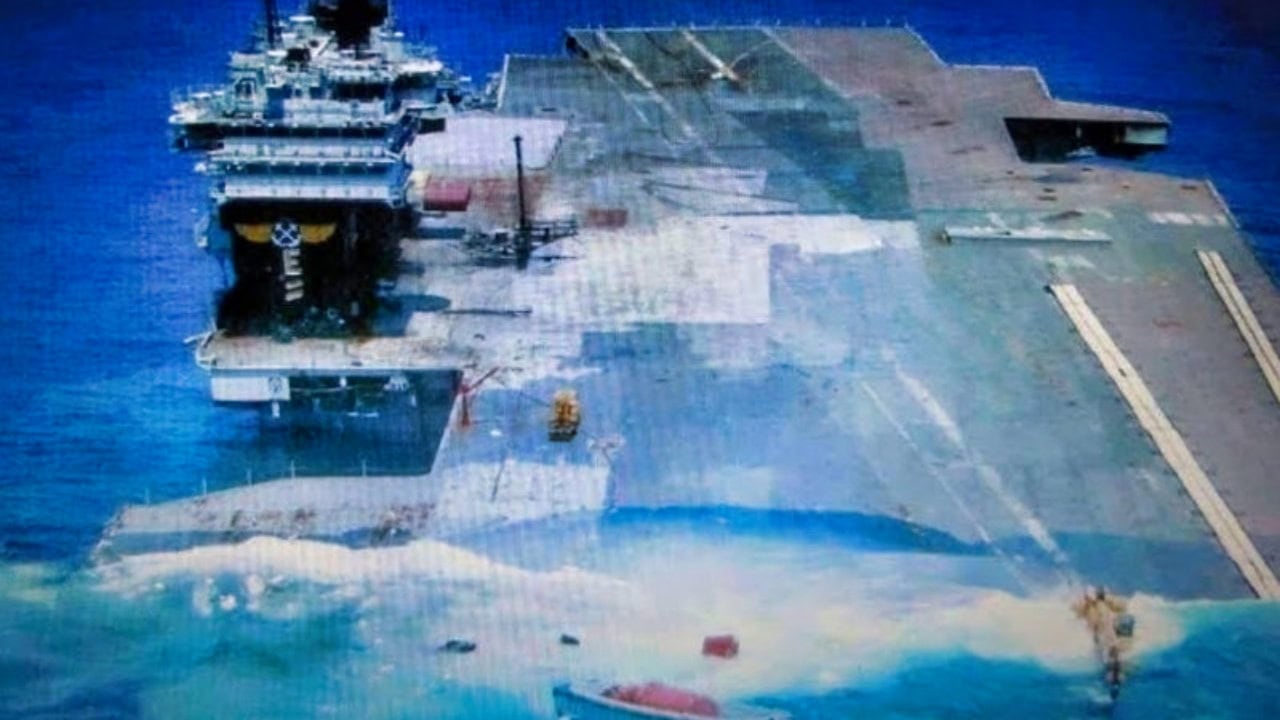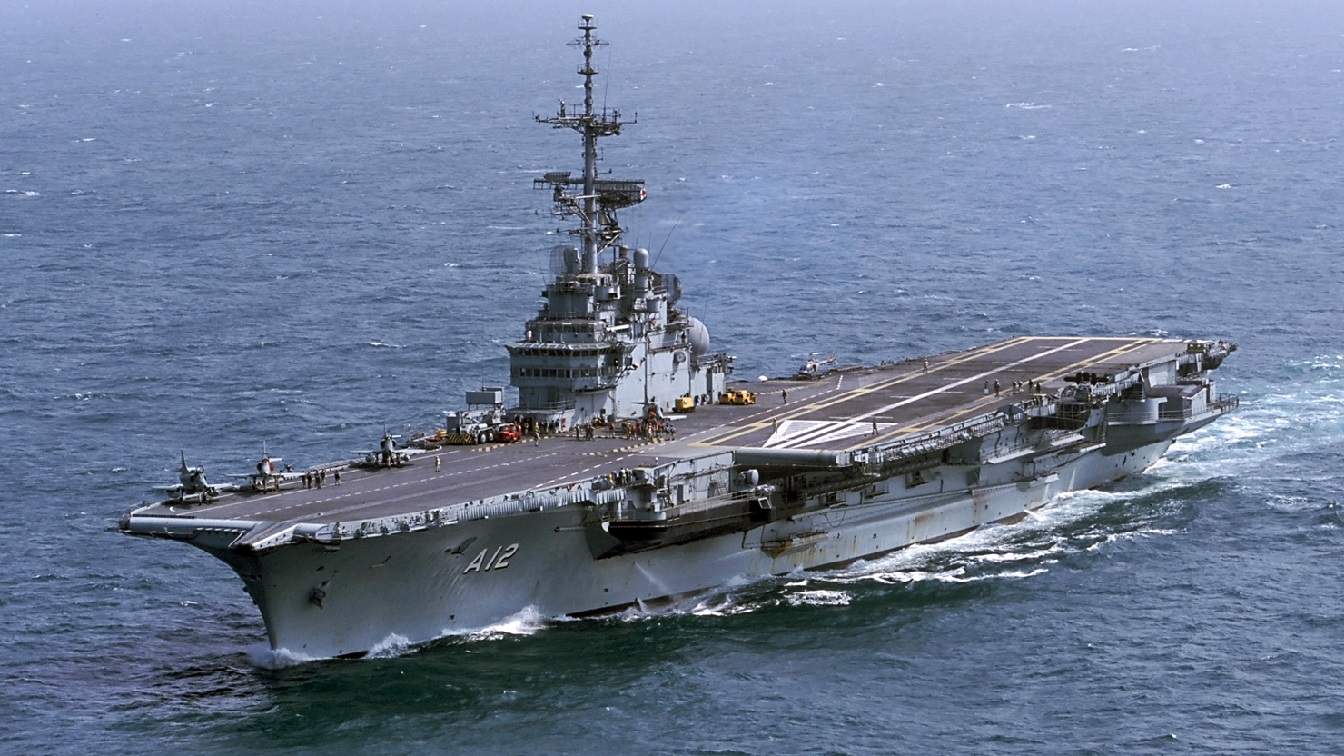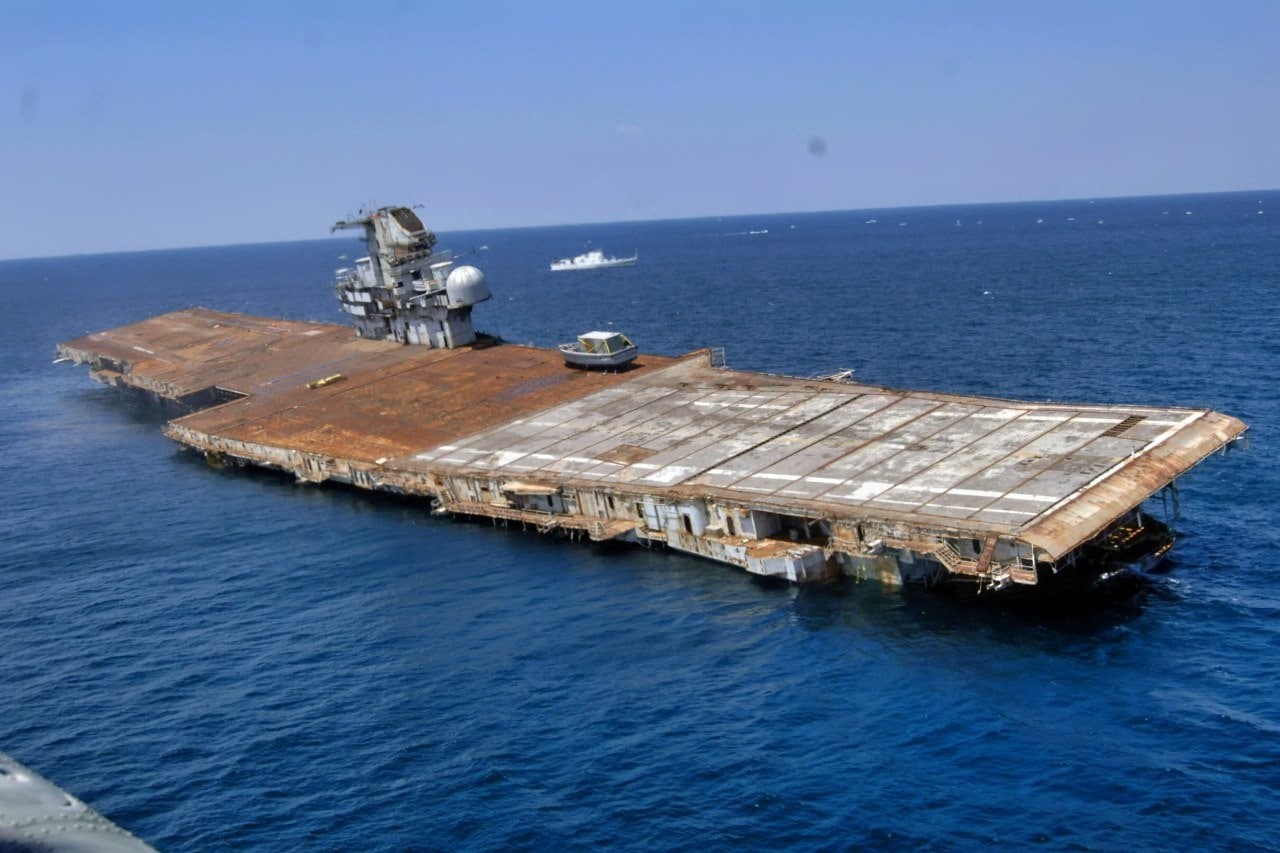Key Points and Summary: In 2023, the Brazilian Navy controversially sank its flagship aircraft carrier, the São Paulo, detonating explosives near the hull to dispose of the aging vessel.
-Originally commissioned as the French Foch in 1963, the carrier suffered years of maintenance failures before being retired in 2017. Environmental groups condemned the scuttling, warning of toxic chemical contamination in the ocean.
-The Brazilian Navy defended its actions, citing environmental studies that aimed to minimize impact.
-While the move resolved logistical issues, it raised concerns about responsible ship disposal and the long-term effects of sinking a vessel laden with hazardous materials.
Why Brazil Blew Up Its Own Aircraft Carrier
The Brazilian Navy sank its own classic flagship aircraft carrier in 2023 by detonating explosives near the hull. The Navy did this for a number of significant reasons, perhaps the largest of which being the carrier was consistently in need of service and maintenance.
The aircraft carrier retired in 2017 following previous efforts to modernize and rebuild the ship in 2015.
Aircraft Carrier Plagued by Problems
The Sao Paulo, as it was called, has a rather distinctive history and was commissioned in 1963 by the French Navy as a carrier called “Foch,” and then transferred to Brazil in 2000.
The ship became the foundation and flagship of the Brazilian Navy but then spent years struggling with maintenance issues and was unable to operate for more than a few months at a time, according to a 2014 essay in Janes.
The problems with the ship were extensive, as they included an explosion in the engine room’s steam network which damaged the propulsion system, according to an essay in Naval News.
Sao Paulo Decommissioned
After recognizing these challenges, the ship was ultimately decommissioned in 2017. However, the difficulties with the ship did not stop there.
The ship’s hull had massively deteriorated, and it was determined that the carrier should not only be scrapped but also “exploded” due to the extent of its toxic chemicals.
Prior to being exploded, the ship was “scuttled” off the Brazilian coast about 350 km off-shore and subsequently determined to present an environmental risk.
NGO: Wrong Decision to Sink Carrier
However, exploding the ship did not necessarily address or reduce the environmental risks. Still, it may have exacerbated them, according to a global NGO called NGO Shipbreaking Platform, which published an essay on the ship in 2023.

USS America Aircraft Carrier Sinking in a Controlled Detonation in 2005. Image Credit: Creative Commons.
The organization argued that the ship should be returned to the base and responsibly disposed of to prevent corrosive, toxic, and damaging materials from contaminating the environment.
The NGO specifically cited the presence of toxic chemicals called PCBs, which have been banned for many years due to “their propensity to cause harm to wildlife and contaminate the food chain after being ingested by fish and other marine animals.”
Sending the damaged hull to the bottom of the Sea may have addressed an immediate or short-term logistical problem, yet this was chosen at the expense of breaking down or disposing of the ship in what is considered a responsible fashion, the NGO maintained.
The Brazilian Navy, however, offered an alternative narrative and defended its decision to “sink” the ship, explaining that an environmental impact would be contained or minimized. According to a statement published in Naval News in Feb. 2023, the Brazilian Navy said:
“The location for the hull’s final disposal, Guas Jurisdicionais Brasileiras (AJB), 350 kilometers from the coast and with a depth of approximately 5,000 meters, was chosen based on research conducted by the Navy Hydrography Center and the Institute of Studies of the Sea Almirante Paulo Moreira. The analyses looked at aspects of navigation safety and the environment, with a focus on mitigating impacts on public health, fishing activities, and ecosystems,” the Brazilian Navy statement said.

Sao Paulo at sea, seen from a Bell 206 Jet Ranger.
About the Author: Kris Osborn
Kris Osborn is the Military Technology Editor of 19FortyFive and President of Warrior Maven – Center for Military Modernization. Osborn previously served at the Pentagon as a highly qualified expert in the Office of the Assistant Secretary of the Army—Acquisition, Logistics & Technology. Osborn has also worked as an anchor and on-air military specialist at national TV networks. He has appeared as a guest military expert on Fox News, MSNBC, The Military Channel, and The History Channel. He also has a Masters Degree in Comparative Literature from Columbia University.

